Cities: Skylines 2 looks like a great sequel for old and new players

Cities: Skylines has been one of those games that always looked interesting to me, but that I never got around to picking up. That’s mostly because I like playing historical city-builders – modern era games just don’t appeal to me that much. It looked kind of intimidating as well, following all the discussions around it. Managing traffic? Sewage? Balancing the power grid? That all made it sound like you needed a degree in civil engineering to enjoy it.
However, checking out Cities: Skylines 2 at gamescom 2023, all those doubts have been flushed down the newly-constructed sewage system of my lovely little beginner town. Onboarding was one of the focuses for developer Colossal Order and publisher Paradox Interactive and it seems those efforts have paid off: I learn step by step what a city needs and what all the tools at my disposal actually do – basics like how to zone different kinds of districts, how to build up a power grid and sewage, and so on. On their own, all of them are pretty simple. It’s when you’re thrown into cold water with everything being completely new that things get overwhelming. Cities: Skylines 2 manages to portion things in just the right dose to make it digestible.
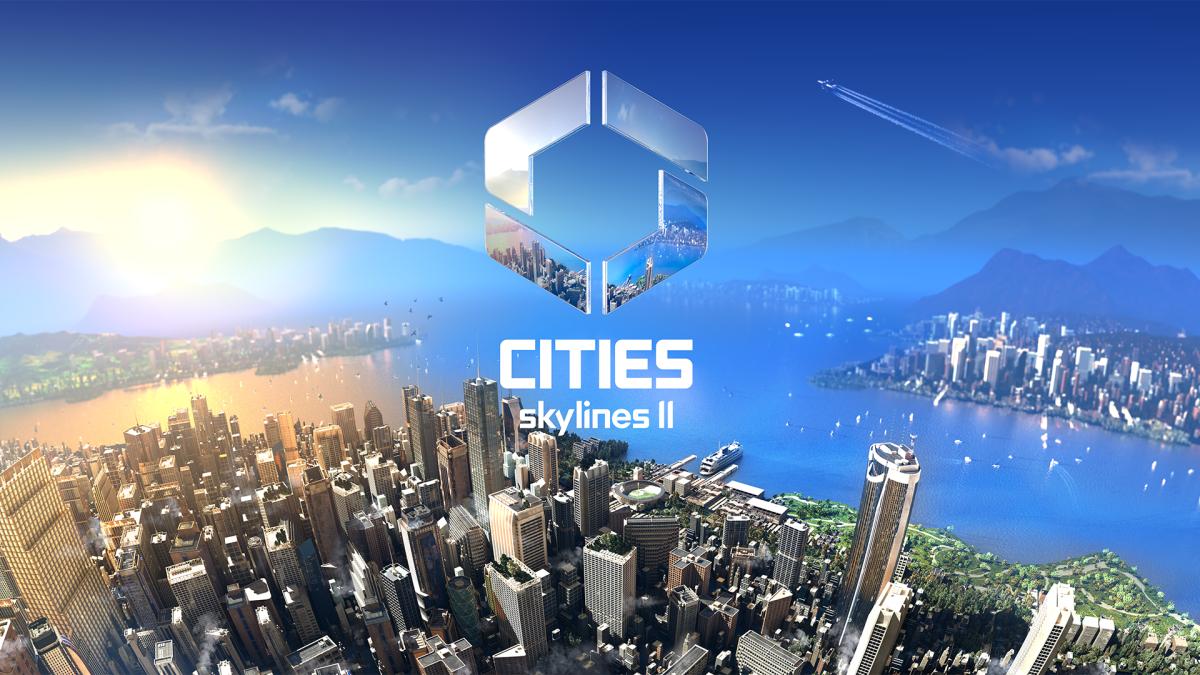
That’s all you need to know to get started, really. Sure, veterans of the first game will easily be able to make a thorough plan right from the beginning, designing an ultra-efficient metropolis, whereas a newbie’s town is inevitably going to run into teething issues, but that’s alright. After all, dealing with problems as they come up is an essential part of the city-builder formula, and the UI of Cities: Skylines 2 will let you know immediately if there’s anything you need to be aware of, sending you a notification. Of course, you can be proactive as well, keeping watch through one of many map filters. That’ll allow you to spot problem zones early.
As your city grows and you increase your level, you’ll be able to unlock additional buildings and features by investing the development points you gain. Gating some stuff behind initial progress is a great way to keep newcomers from being overwhelmed by all the possibilities, and this way allows them to choose for themselves what they want to deal with. Want to introduce the danger of fire? Unlock the fire department. Is it time to include healthcare into the equation? Obtain access to the hospital. It's a natural flow that eases you in and makes you want to assume additional responsibilities, because they are tied to lots of awesome and useful stuff you'd love to have in your city.
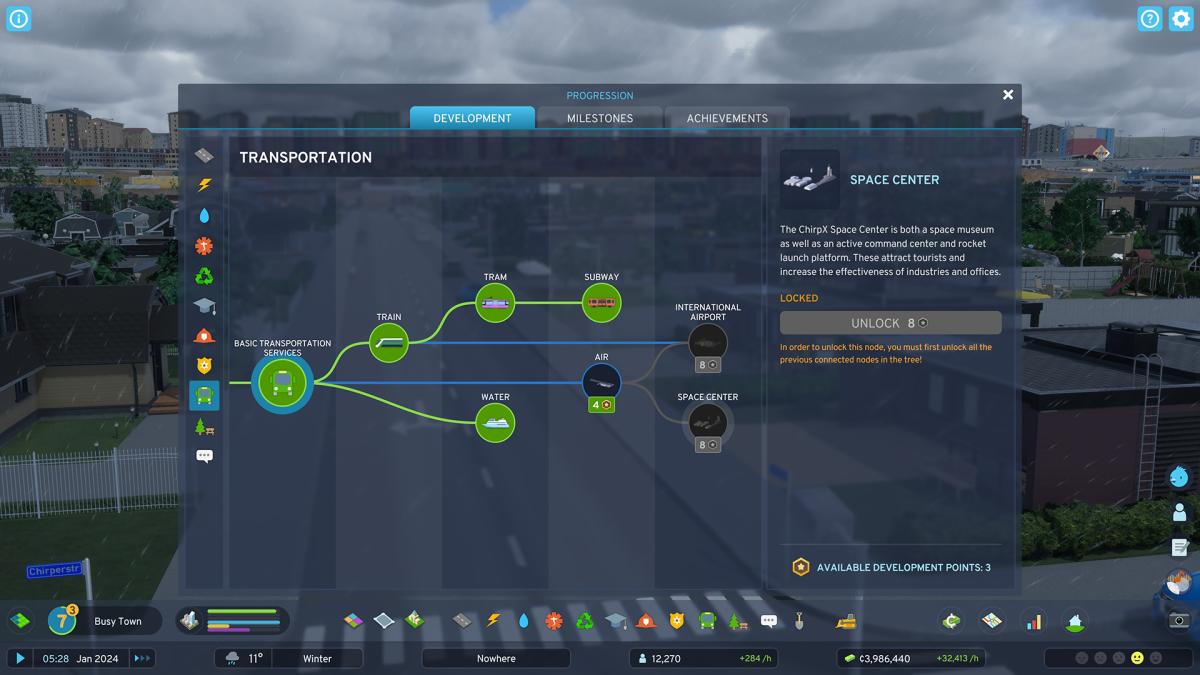
One cool addition to buildings like the hospital in Cities: Skylines 2 is the ability to upgrade them as you play, adding more capacity for patients or ambulance vehicles to keep up with demand. While you can still choose to simply build more hospitals, you can now play ‘tall’ instead of ‘wide’ in this regard. Even one hospital with maximum upgrades won’t be enough for a giant metropolis and you’ll need to build more of them eventually, you won’t require one at every fourth street now. Just make sure to place your initial hospital in a smart way and keep tabs on those upgrades – again, a good way to streamline and simplify things without taking away depth.
After acquainting myself with the basics and learning about developing my town, I’m being put in charge of a city that’s already a few hours old – it’s big, it’s sprawling, and it’s beautiful. Seriously, Cities: Skylines 2 is visually impressive. You can sit there for a while, taking in the sights of what you’ve created. And I mean, that’s always been part of the charm of city-builders, right? Despite all the mechanical complexity and a focus on giving players ways of expressing themselves, this aspect is never far from Colossal Order’s sight.
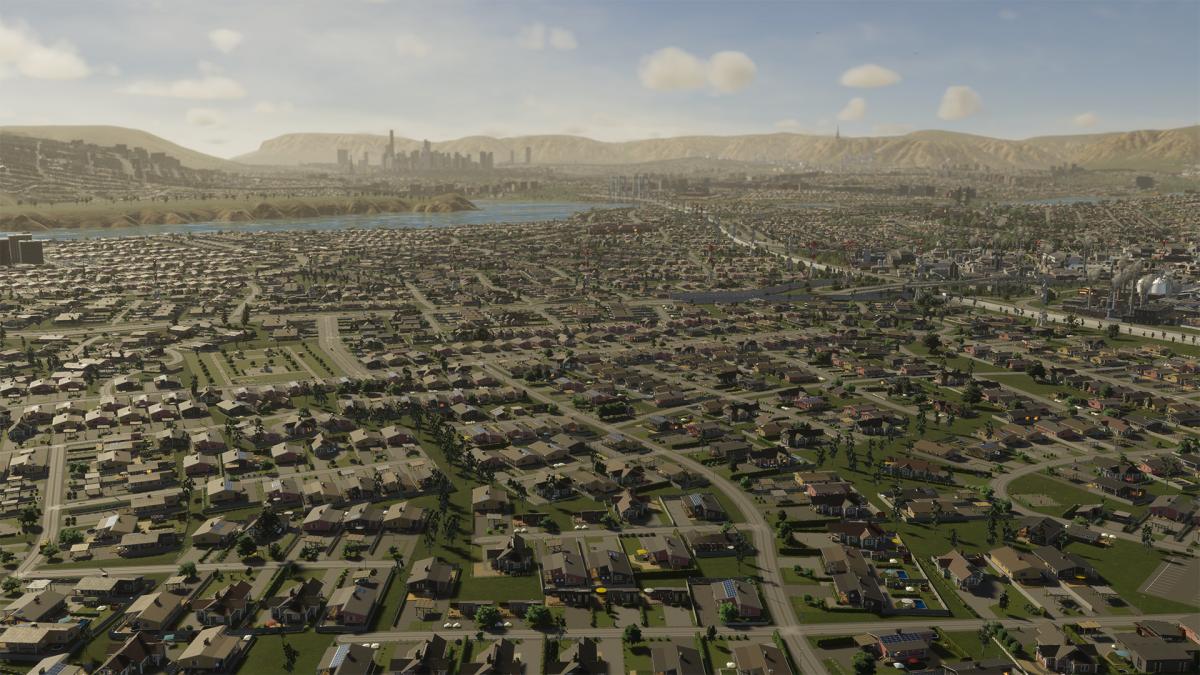
While my cozy little beginner town was all about growth and not much else, there are problems plaguing this other city. One of them is a fire that broke out and is quickly spreading through one of the housing districts. It’s all fine, I’m told, the fire department will be there soon. They weren’t. Spread over multiple islands in a river delta, the city I took charge of is a pretty big one – and it took a while until the fire trucks arrived to get things under control. Turns out that this – what I assume to be a newer – district didn’t have its own fire department yet, so I remedied that mistake. In my mind, this service is one that should be spread widely and not be centralized.
As a reward for going through this crisis, I decided to give this district something nice – a cool landmark, called a signature building. These are special buildings you can unlock and construct, which are going to have a positive effect on certain zones around them, buffing stats like land value. In this case, I built a cool riverside apartment building that buffs dense urban housing in its vicinity. Those generic buildings actually seamlessly added themselves to the landmark, so it all looked quite natural.
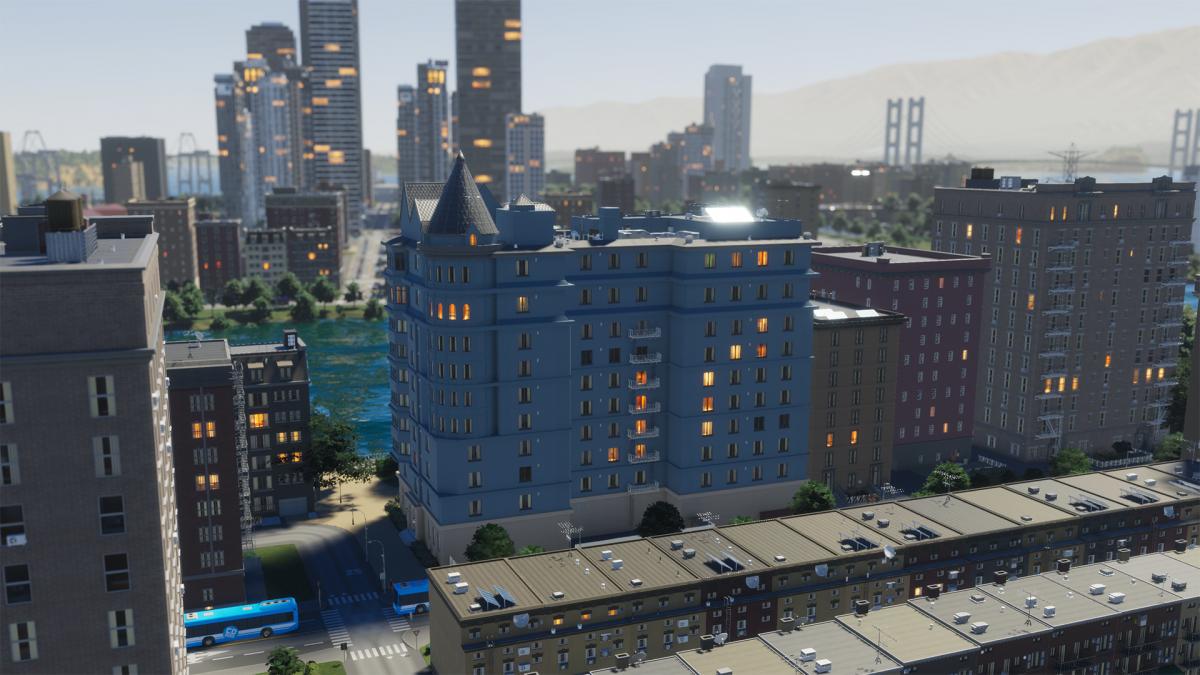
More notifications come in: traffic issues here, accidents there, some true and some not – there still seem to be some minor issues with those notifications, sending you scrambling without much of a reason. Real-life mayors probably have to deal with false alarms all the time, I guess. I just follow a random citizen around for a while (one click on them tells you their life story), who gets into a little accident, but after a minute he goes back into his car and rides into the sunset. A little social media feed on the side of the screen supplies you with slice-of-life messages from your city, gauging the mood.
Things seem to go well and my time with Cities: Skylines 2 comes to an end – and despite doing some mayorly stuff and learning the basics, I only barely scratched the surface of this chonky beast of a game. I could have played around with the budget or changed the laws of my city, done major redevelopment, set up public transportation, or have expanded the buildable area, or done this and that. Step by step. Hour by hour. Yeah, I'll enjoy this.
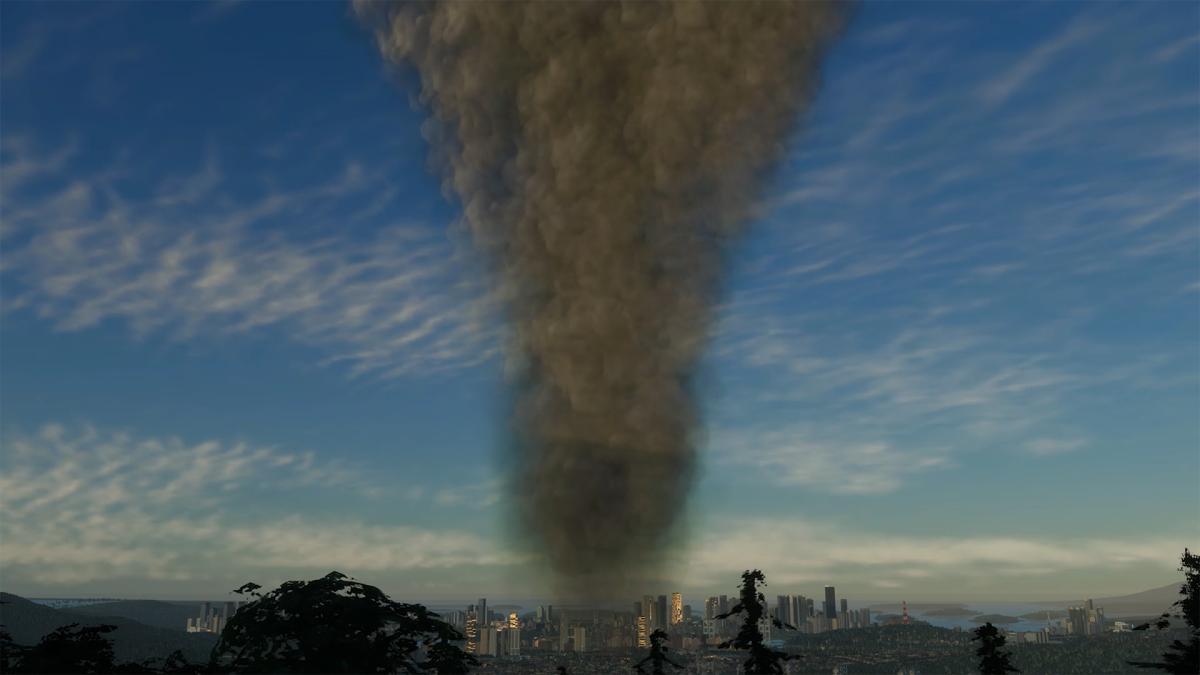
What I also learned is that Cities: Skylines 2 is a game in which you have to set your own goals – you need to decide what kind of city you want to build and then act accordingly, even if you’re just a beginner. Make your own challenge and win conditions, even if it’s as simple as “I want to see how big I can get this city to be.”
Well, that’s going to be pretty darn huge in Cities: Skylines 2, which will be released on October 24, 2023, for PC, PS5, and Xbox Series X|S – and as I can now assure you, there is no need to be afraid about making the jump.
